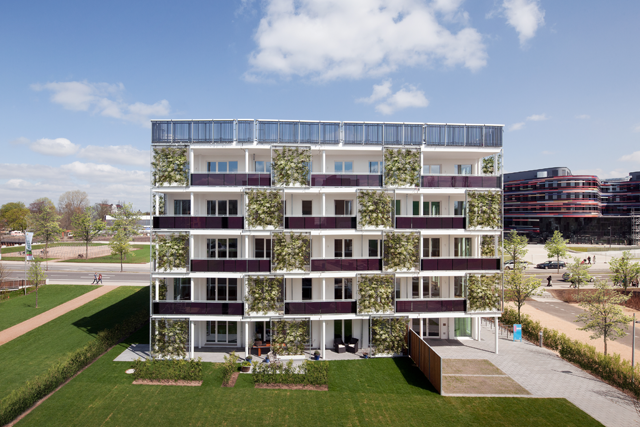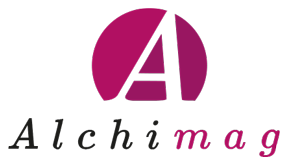Karl Lagerfeld, Chanel's creative director, is giving birth to her first interior design project. Fashion icon, visionary artist and…

An “energy-smart façade” that generates and stores energy throughout the year makes this house, designed by zillerplus Architekten und Stadtplaner München, an “efficient house plus” – a building that is capable of generating more energy than its residents use. This is made possible by techniques such as the use of particularly clever phase-change materials (PCMs), which are also used in “pocket warmers”.
One Façade, Three Layers: all the Better for the Climate
The outer shell of the Smart is Green building is made up of layers including a vertical garden façade that acts as a heat shield during summer, along with insulating glazing, which protects from both heat and cold, and a PCM “curtain”. PCMs are in a constant aggregate state between solid and liquid. Like “pocket warmers”, which absorb heat when immersed in hot water and can be used to warm freezing hands when it is cold, these materials can absorb the warmth from the sun’s energy and release it later. Excess heat is thus removed from the area during the day, preventing the apartments from overheating. This stored heat is then released during the cooler hours of the night.
Peak temperatures during both summer and winter can thus be intercepted and balanced out, resulting in a very pleasant interior climate.
PCMs are also used for the building’s central heating storage facility, with a volume that is only half that of a conventional storage tank. The surplus heat from the solar thermal facility is stored here and maintained at the right temperature for under-floor heating. If there is a significant excess of solar energy, it is fed into the Wilhelmsburg local Energy Network.

In return, this ensures a sustainable heat supply, especially in long periods of cold weather.
Both the exterior cladding and the roof are mounted with photovoltaic surfaces that transform energy from sunlight into electrical energy, and solar thermal surfaces, which convert solar power into heat energy. The façade and roof therefore play an active role in the building’s ingenious engineering concept, using innovative forms of technology to generate energy that can be consumed within the house itself. Moreover, such technologies are integrated into the very architectural concept behind the building.
Tomorrow’s Properties Will Help their Residents to Get Around
Like all of the concepts behind the Smart Material Houses, the façade with its clever materials is not the only innovative element – the integrated concept for the whole project is also groundbreaking. In Smart is Green this can be seen in the ground plan and the way in which it can be accessed, with various entrances to the individual apartments via stairs or lifts.
The house is laid out so that the apartments can be configured or modified in a versatile way, allowing them to be partitioned or extended in order to meet the needs and changing living arrangements of their inhabitants.
The attractiveness of “green living” is also embodied by the spacious terraces on each landing, each containing a small garden, between the planted and glazed areas on the southern side of the building.
The Technical Innovation Doesn’t Stop with the Building
Just in front of the green façade are facilities for providing green energy for getting around in the future, in the form of a fast charging station for electric cars. Surplus energy can be offloaded onto vehicles, which act as energy storage devices and can thus make an important contribution to the energy design of the building. E-cars also form a natural part of the mobility concept, as a car-sharing system is planned for the residents. All of this will make car-sharing among neighbours an attractive alternative to owning private vehicles. Extra charging devices for electric bicycles and scooters can also be installed in combi-boxes on the ground floor upon request.
(Fabiana Cambiaso – Università La Sapienza)
Smart Green, Zillerplus Architekten
Prototype IBA 2013 Hamburg
Completed: 2013
Site: Hamburg, Germany
Materials: Phase change Materials (PCM), Steel, Concrete
Applications: Curtains, Solar Shading
Figures: © Zillerplus Architekten






